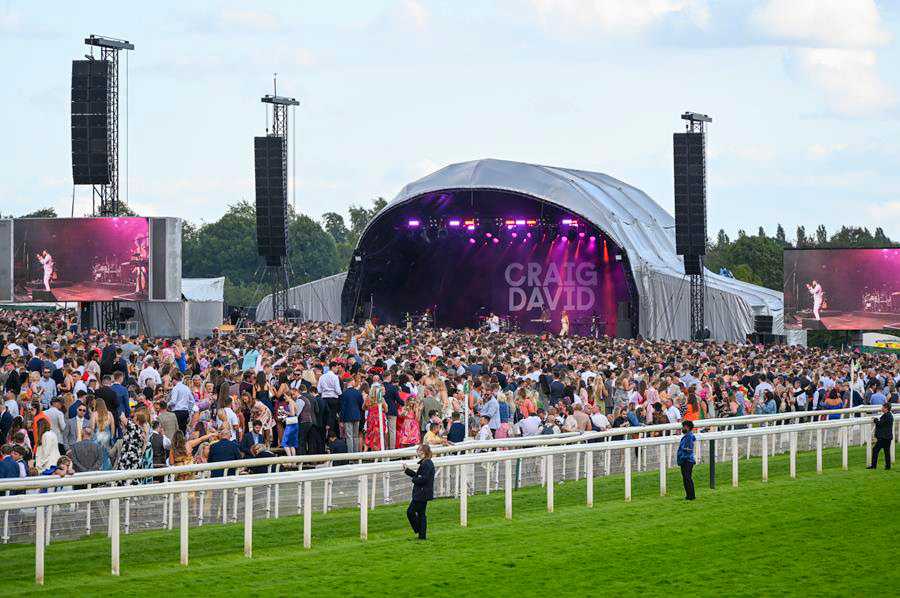L-Acoustics on track at York Racecourse
- Details

Adlib's account manager, Richy Nicholson, notes that this is the third year that Adlib has supported York Racecourse and Music Plus Sport: “Dick Tee from EnTEEtainment brought us onboard, and I think York Racecourse may have been one of the first shows we looked after in 2021 post-COVID," he says.
“The primary objective for York Racecourse in hosting these gigs was to provide a concert-grade experience to audience members across the 300 metres, and the lawn within the track, as well as to additional VIP areas,” Billy Bryson, system tech at Adlib explains. The challenge was to accomplish this without compromising sightlines for racegoers during the day, as well as ensuring that no concert infrastructure obstructed the racing event. Adlib achieved this by using L-Acoustics' technology, placing a priority on sound quality while keeping the concert infrastructure discreet.
The system design centred around long throw K1 loudspeakers. Bryson explained, "K1 was the obvious choice to tackle the large audience areas, with delay locations constricted by the racecourse layout.”
Main hangs consisted of 12 K1 over four Kara II down per side with side/out-fill stacks of six Kara II per side. Three delay towers were used: delay 1, located at FOH, included eight K1 over two K2, delay 2, located in front of the Ebor stand, comprised 10 K2, while delays 3 and 4, each located on the lawn inside the racetrack, were made up of two hangs of eight K1 over four K2. The VIP area system boasted two stacks of two SB18 with six Kara II.
A further 20 KS28 subs provided low end extension while centre-fill was handled by two flown X12 and X8 provided lip-fill. Amplification and processing were managed via 56 LA12X amplified controllers six P1 processors, and 12 LS10 Switches.
The LA12X amplified controllers were housed at each of the five remote loudspeaker locations and were fed via AVB utilising the in-house fibre. L-Acoustics P1 processors served as the front-end to the system, distributing audio via a redundant Milan AVB network. Each location was served by only a single duplex fibre pair, requiring bi-directional transceivers to be installed in the LS10 network switches to allow for a primary and secondary network to connect to each location. RF point-to-point links were used as a further backup to the redundant Milan AVB network.
As no infrastructure was permitted to run through audience areas or alter the racing events, the venue’s in-house single-mode broadcast fibre infrastructure was used for signal distribution. The drive system was handled via an Outline Newton at FOH, while on-site tuning and optimisation were accomplished using Earthworks M30 measurement mics and Smaart v9 and L-Acoustics M1 software.
Soundvision simulation software played a crucial role in the project's success. Bryson explains that "the complex audience geometry was modelled in SketchUp, using CAD plans of the site as well as 3D terrain data.
In addition to the technical abilities of the PA, “L-Acoustics systems being so rider-friendly helps to accommodate a range of touring artists," added Bryson. Feedback from artists' engineers and event organisers has been overwhelmingly positive. Nicholson shared, "From the artist engineer point of view, it really helps when they can walk in and see an event supplier and equipment brands that they're familiar with.”











